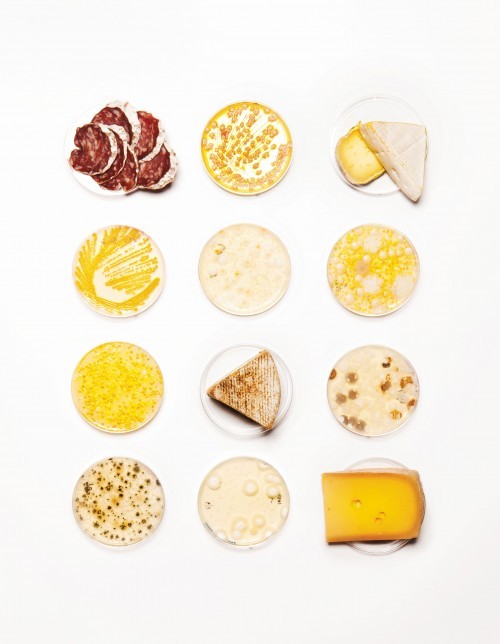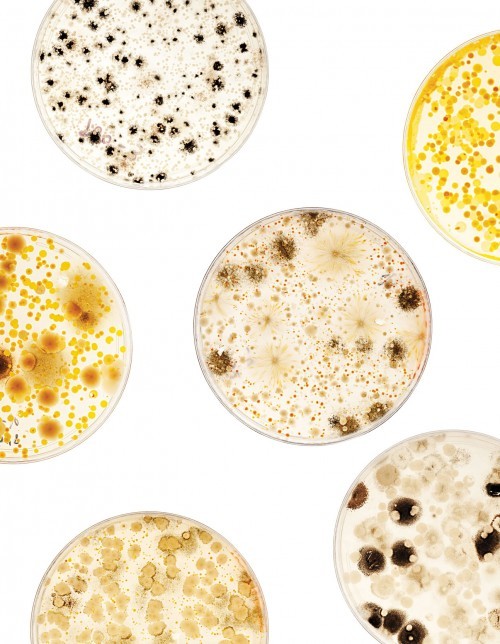

cheesenotes:
Edible Boston has an interesting profile of Rachel Dutton, Ben Wolfe and Julie Button and their ongoing quest to understand the microscopic ecosystems of cheese rinds (they’ve also now expanded their research into fermented, cured and otherwise preserved aged foods — they’ve even worked with David Chang to identify the microbial profiles of his kimchi’s). In the process, they have come to some pretty interesting (and potentially controversial) discoveries, regarding the notion of Terroir:Microbes in cheese further defined! Yay for the works of science!
read the full article here.Cultural Revolution
…according to the data that Dutton and her colleagues have generated—the typical aged cheese is home to anywhere from 5 to 20 unique microbes. If they are not put there deliberately by the cheesemaker, where do they come from? And—more importantly—what are they up to? These are exactly the sort of questions that the Dutton lab is attempting to elucidate.
With a comprehensive bank of cheese microorganisms on hand, the work of piecing apart the interactions among each is now possible. It’s time-consuming, given the numbers involved, but not complicated: you just mix and match the organisms in all possible combinations on an agar plate, and then observe what happens over time. (The bulk of the interactions work falls on the shoulders of Julie Button.) This fungus and that bacterium together produce a certain rosy-hued pigment, these two bacteria with the unmistakeable aroma of Kraft Macaroni & Cheese. Each data point can then be used to explain the appearance of these same phenomena out in the “real world” on the cheeses themselves.
One of first key discoveries the lab made was the fact that cheeses of the same style, no matter the origin, were remarkably similar to one another in terms of their microbiology. Not just similar, but nearly identical in many cases, with the same sets of species on each. “We thought maybe we would find completely different things in French cheeses than we did in the US cheeses,” Dutton told me. “Instead, what we are finding is that the way you make a cheese creates a specific environment, and then you get the microbes that are associated with that type of environment.”
These results upend the notion of terroir, the belief that the essential character of certain foods derives from their place of origin. The term was first used by the French to explain why grapes grown in a particular climate and soil type produce wines that taste a certain way, while the same vines transplanted to another region can yield a very different product.
The idea of terroir has long applied to cheesemaking as well. The notion that the character of a cheese is tied directly to the unique microbial makeup of the cave in which it is ripened is an old one. You might make a similar cheese elsewhere, but—lacking the precise mixture of microbes found only in that one cave—it’ll never be quite the same. Dutton’s results suggest otherwise.
The microbes found in cheese appear to be ubiquitous, rather than local. What’s important—at least as regards cheeses that derive much of their flavor from rind microbes—is not so much where you make the cheese, but rather how you make it. If you look closely you’ll find the same set of organisms on a blue cheese from England (Stichelton, for example) as on a blue from Vermont (like Jasper Hill’s Bailey Hazen Blue). As postdoc Ben Wolfe is fond of saying, “If you build it, they will come.”
Dutton and her colleagues admit that cheese terroir might still exist at the level of the individual strain rather than that of species or genus, as had been previously assumed.
But if so, that fact might present new commercial opportunities for United States cheesemakers. Almost to a one—largely for historical reasons—American cheeses are made using cultures isolated from and produced in Europe. If Dutton and her team identify strains of bacteria or fungi that are unique to North America, these could potentially serve as stock for locally produced cultures, freeing the American cheesemaking industry from its present reliance on European ones.
(Photos ©2013 Edible Boston)
Source: http://thechefslab.tumblr.com/post/45543166449
Food, Cheese, Microbiology, Rind, Science
No comments:
Post a Comment